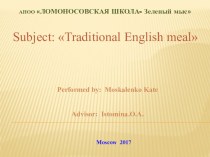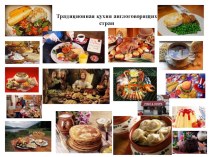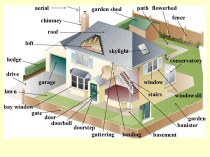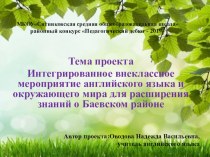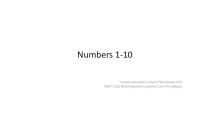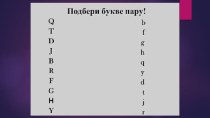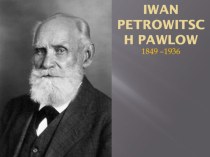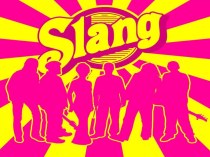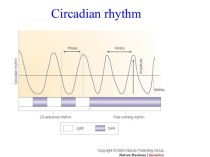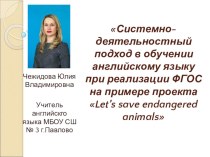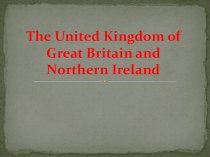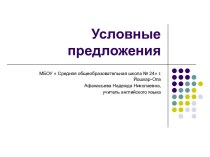Слайд 2
Contents:
The production of speech. The organs of speech.
Nouns.
Indefinite
pronouns: some/any and their derivatives.
Articulation of sounds.
The adjective. The
degree of comparison.
The sounds of speech. Sounds and phonemes.
Numerals and pronouns.
Consonants.
Questions: types of questions.
Vowels: principles of classification.
The article.
Continuous tenses.
Sequence of tenses.
Indirect speech.
Perfect tense.
The syllabic structure. Syllabic formation.
Word stress.
Position if word stress.
Passive voice.
Conditional Sentences.
Intonation. Manifestation of intonation and its linguistic function.
Modal verbs.
Intonation Patterns and Sentence Types.
Adverbs.
Perfect continuous tenses.
Слайд 3
1. THE PRODUCTION OF SPEECH.
THE ORGANS OF SPEECH.
Слайд 4
Contents:
The Production of speech
Speech organs
Exercises
Слайд 5
Speech is the vocal form of human communication.
Слайд 6
The Production of speech
In linguistics (articulatory phonetics), manner
of articulation describes how the tongue, lips, jaw, vocal cords,
and other speech organs used to produce sounds, make contact with each other. Often the concept is only used for the production of consonants. For any place of articulation, there may be several manners of articulation, and therefore several homorganic consonants.
Normal human speech is produced with pressure from the lungs, which creates phonation in the glottis in the larynx, which is then modified by the vocal tract into different vowels and consonants.
Слайд 7
Speech organs
The organs of speech fall into three
groupings:
Respiratory system: Lungsgenerating air stream
Phonatory system: larynx and vocal
folds
Articulatory system: vocal tract
Слайд 9
Lungs
Most human sounds are produced by an egressive
pulmonic airstream. i.e. lungs pushing the air outwards
During speech,
the lungs take in air rapidly and let it go slowly.
Слайд 10
Larynx
Found at the very top of the
trachea
Contains the two vocal folds, one on the left
one on the right.
Слайд 11
Vocal folds
Their outer edges are attached to muscle
in the larynx while their inner edges are free.
If
the back end of the vocal folds are held apart, a triangular space opens up between them.
The space is called glottis.
Слайд 12
Vocal tract
The air passages above the larynx are
known as ‘vocal tract’
The shape of the vocal tract
is very important in the production of speech.
Made up of:
Oral cavity (mouth and pharynx)
Nasal cavity
The parts of the vocal tract that are used to form sounds are called articulators.
Upper and lower surface
Слайд 13
Vocal tract
Lips
Teeth
Roof of the mouth
Alveolar ridge-behind
upper teeth
Hard palate-bony structure
Soft palate or velum-at the back
of the mouth
Uvula
Pharynx –sound production in Arabic
Слайд 14
Vocal tract
Tongue-five areas:
1) Tip at the very
front
2) Blade below the alveolar ridge
3) Front below the
hard palate
4) Back below the soft palate
5) Root towards the rear wall of the pharynx
Слайд 15
In summary:
Speech is the verbal means of
communicating.
Слайд 16
I. Exercises for the Opening of the Mouth
Keep
the mouth closed with the lips pressed together
Drop
the lower jaw as low as possible. The mouth should be wide open (Fig. 3).
Come back to the (a)-position.
Continue practising the exercise.
Слайд 17
II. Keep the mouth closed with the lips
pressed together.
Open the mouth as wide as one third
of the opening.
Open the mouth even one third wider. The separation of the jaws is considerable.
Drop the lower jaw as low as you can so that the opening of the mouth could be the widest.
Come back to the (a)-position.
Continue doing this exercise.
Слайд 19
Noun
Countable nouns
Uncountable nouns
Exercises
Contents:
Слайд 20
NOUNS
A noun is a word for
a person, place, or
thing. (You might like
to think of nouns as "naming" words.) Everything we can see or talk about is represented by a word that names it. That "naming" word is called a
noun.
Слайд 21
COUNTABLE NOUNS
Nouns which can be counted
and have a singular and plural form
We
put a/an before countable nouns in the singular
a + consonant sound
an + vowel sound
many apples
COUNTABLE NOUNS
Слайд 24
UNCOUNTABLE NOUNS
nouns which cannot be counted and they
usually have no plural
food: cheese, butter, sugar, meat, jam
etc.
liquids: coffee, water, milk, tea, oil etc.
materials: gold, iron, wood, paper etc.
abstract nouns: beauty, love, sadness etc.
Слайд 25
UNCOUNTABLE NOUNS
Be careful! These nouns are usually uncountable:
information,
advice, weather, news, bread, hair, furniture, work
Слайд 26
UNCOUNTABLE NOUNS
They are followed by a verb in
the singular
We do not use a/an or one but
we can use some
Слайд 27
UNCOUNTABLE NOUNS
some meat
some milk
There
is some meat on the table
There is some milk
in the glass
Слайд 28
Exercise 1: Listen and complete the chart
1.
rice
2. potato
3. information
4. man
5. bread
6. poetry
7. mile
8. vegetable
9. weather
10.
sheep
Слайд 29
Exercise 1: Listen and complete the chart
1.
rice
2. potato
3. information
4. man
5. bread
6. poetry
7. mile
8. vegetable
9. weather
10.
sheep
Слайд 30
1. The children are playing in the garden.
2. I don't
like milk.
3. I prefer tea.
4. Scientists say that the environment is threatened
by pollution.
5. My mother uses butter to prepare cakes.
6. There are a lot of windows in our classroom.
7. We need some glue to fix this vase.
8. The waiters in this restaurant are very professional.
9. My father drinks two big glasses of water every morning.
10. The bread my mother prepares is delicious.
11. Drivers must be careful; the road is slippery.
12. Some policemen are organizing road traffic to avoid any accidents.
13. I bought three bottles of mineral water for our picnic.
14. I'd like some juice please!
15. Successful candidates will join the camp later this year.
Exercise 2: Decide whether these nouns are countable (C) or uncountable (U)
Слайд 31
1. The children are playing in the garden. C
2. I don't
like milk. U
3. I prefer tea. U
4. Scientists say that the environment is threatened
by pollution. C
5. My mother uses butter to prepare cakes. U
6. There are a lot of windows in our classroom. C
7. We need some glue to fix this vase. U
8. The waiters in this restaurant are very professional. C
9. My father drinks two big glasses of water every morning. C
10. The bread my mother prepares is delicious. U
11. Drivers must be careful; the road is slippery. C
12. Some policemen are organizing road traffic to avoid any accidents. C
13. I bought three bottles of mineral water for our picnic. C
14. I'd like some juice please! U
15. Successful candidates will join the camp later this year. C
Exercise 2: Decide whether these nouns are countable (C) or uncountable (U)
Слайд 32
3. Indefinite pronouns: some/any and their derivatives
Слайд 33
Contents:
Indefinite pronouns: some/any
Exceptions for some
Exceptions for any
Their derivatives
Exceptions for their derivatives
Слайд 35
Exceptions for some
Some (and not any) can be
used in special questions, as well as in general
questions in which something is suggested
Why didn’t you buy some cheese?
(Почему вы не купили сыр?)
Would you like some chocolate?
(Не хотите шоколада?)
Can I have some more tea?
(Можно мне еще чая?)
Слайд 36
Exceptions for some
Some with the meaning
of «некоторые», with the meaning «часть» used in both
affirmative, and in interrogative and negative sentence
Have you read some stories in this book?
(Читали ли вы некоторые рассказы в той книге?)
I haven’t yet a spoken about it to some of the first-year students.
(Я еще не разговаривал об этом с некоторыми студентами первого курса)
Слайд 37
Exceptions for any
Any can be used in
an affirmative sentence with the meaning “любой, всякий“
You can
get this book at any bookshop.
(Вы можете достать эту книгу в любом книжном магазине)
You may come at any time that is convenient to you
(Вы можете придти в любое время, которое вам удобно)
Слайд 38
Their derivatives
body/one (кто-то, кто-нибудь)
Some
thing (что-то)
Like some, somebody, someone, something pronouns are used in affirmative sentences
Somebody (someone) is knocking at the door.
Кто-то стучит в дверь.
Give me something to read.
Дайте мне что-нибудь почитать.
Слайд 39
Their derivatives
body/one (кто-то, кто-нибудь)
Any
thing (что-то)
Like any, the pronouns anyone, anybody, anything are used in negative sentences, and in general questions.
There isn’t anybody (anyone) there.
Там никого нет.
Did you see anybody (anyone) there?
Видели ли вы там кого-нибудь?
Слайд 40
Exceptions for their derivatives
Somebody, someone and
something (and not anyone, anybody, anything) are used in
special questions, as well as in general questions in which something is suggested
Why didn’t you ask somebody to help you?
(Почему вы не попросили кого-нибудь помочь вам?)
Will have something to eat?
(Кто-нибудь поможет мне?)
Слайд 41
Exceptions for their derivatives
Anyone, anybody, anything
can be used, either in affirmative or in negative
sentences with the meaning “всякий, любой"
Anybody can to that.
Любой может это сделать.
May I play anything I like?
Могу я сыграть все, что я хочу.
Слайд 42
Exercise 1. Choose the correct answer.
Liz is shopping.
She wants to buy (anything / some / any)
new clothes. She wants to buy (some / any / something) nice and (some / any) new shoes, but she can’t find (something/ anything / anybody) that she likes. She is also looking for a present. She wants to buy ( anybody / something) special for her friend.
Слайд 43
Exercise 2. Complete the sentences with some/any.
There is _______
tea in the crystal glass, but it is very
hot.
Are there ________ tasty apples in the bag?
There isn't _______ jam on the round plate.
Did they ship ______ of the wheat yesterday?
You can get this book at _____ bookshop.
Слайд 45
Contents:
Introduction
Organs of speech
The respiratory or power mechanism
The vibratory
mechanism
Resonator mechanism
Obstruction mechanism
How sounds are classified
Tongue-twisters
Слайд 46
Introduction
The term articulation refers to the bio-mechanical process
of altering the flow of air through the vocal
tract to produce sounds.
Sounds are described not by how they sound to the ear, but rather how they are produced in the vocal tract. In the posts below dealing with the different sounds in English, they are so named, and each sound is described based on how the vocal organs interact with each other in producing each specific sound. In fact, the word articulate actually means move. Sounds are produced my moving the articulators (things that can be moved) within the vocal tract (lips, tongue, etc). Terminology relating to the vocal organs, articulators, and points of articulation is defined below.
Слайд 47
Organs of speech
The respiratory or power mechanism
Organs which
are active directly or indirectly in the process of
speech production are called organs of speech. In accordance with their linguistic function the organs of speech may be grouped as follows:
The respiratory or power mechanism furnishes the flow of air which is the first requisite for the production of speech sounds. This mechanism is formed by the lungs, the wind-pipe and the bronchi. The air –stream expelled from the lungs provides the most usual source of energy which is regulated by the power mechanism. Regulating the force of the air-wave the lungs produce variations in the intensity of speech sounds. Syllabic pulses and dynamic stress, both typical of English are directly related to the behaviour of the muscles which activate this mechanism.
Слайд 48
The vibratory mechanism
From the lungs through the wind-pipe
the air-stream passes to the upper stages of the
vocal tract. First of all it passes to the larynx containing the vocal cords which form the vibratory mechanism. If the vocal cords are closed so that they can touch each other lightly, the air passing between them causes them to vibrate, and the sound is voiced. By moving the vocal cords wide open we can stop the vibration, and make the sound voiceless. The space between the vocal cords is called glottis, and the sounds are made are called glottal; in English there are two of them: one is a voiceless fricative like a sigh before a stressed vowel [ h ] in high, and the other is a glottal stop[ʔ], plosive made at the glottis by the vocal cords when they are pressed tightly together, as in [ bʌt(ə )n] button.
Слайд 49
Resonator mechanism
Resonator mechanism. The vocal tract above the
larynx starts with a passage way called pharynx. Then
the vocal tract divides: one passage way goes up into the nasal cavity, and the other into the mouth cavity. We can close off the access to the nasal cavity by rising the soft palate (also called velum), and then the air will go through the mouth, and the sound will be oral (most English and Russian), or we can lower the soft palate and allow the air to go into the nasal cavity, in which case the sound will be nasal [m, n, ]. The extreme end of the velum is a small piece of tissue called the uvula which plays a part in the pronunciation of some languages: French for instance, has a uvular sound [R].
Слайд 50
Obstruction mechanism
Obstruction mechanism. Inside the mouth there are many
parts called articulatorswhich are used in speaking. The tongue, the lower jaw
and the lips can move and make contact with the immobile palate (the roof of the mouth), the alveolar ridge and the teeth. The principle parts of the tongue are the tip, blade, front, centre, back and root.
Слайд 51
How sounds are classified
The fundamental distinction between consonants

and vowels is that consonants make some obstruction to
the flow of air, while vowels make relatively little obstruction.
Consonants are classified in terms of the following factors:
state of the vocal cords ( voiced - [b], [d], [g], [v], [z], [ð ], [ʒ ], [ʤ ] or voiceless -[p], [t], [k], [f], [s], [ʃ ], [θ ], [ʧ ])
position of the soft palate (nasal [m], [n], [ŋ ]or oral [b], [d], [g], [v], [z], [ð ], [ʒ ], [ʤ ], [p], [t], [k], [f], [s], [ʃ ], [θ ], [ʧ ], [w], [l], [r], [j])
place of articulation (labial: bilabial [p], [b], [m], [w]; labio-dental [f],[v], coronal: dental [θ],[ ð], [s], [z], alveolar [t], [d], [l], [n], palato-alveolar [ʃ], [ʒ], [ʧ], [ʤ], retroflex [r] , dorsal: palatal [j], velar [k], [g], [ŋ], glottal [h], [ʔ])
manner of the production of noise (stops: nasal stops [m], [n], [ŋ], oral stops [b], [d], [g], [p], [t], [k], fricatives [f], [v], [s], [z], [h], [θ], [ð], [ʃ], [ʒ], approximants [w], [l], [r], [j])
Слайд 52
Tongue-twisters
Unique New York
New York Unique
To sit in solemn
silence in a dull dark dock
In a pestilential prison
with a life long lock
Awaiting the sensation of a short sharp shock
From a cheap and chippy chopper on a big black block
Red Leather, Yellow Leather
She says she shall sew a sheet
Слайд 53
5. THE ADJECTIVE
THE DEGREE OF COMPARISON
Слайд 54
What is Adjective
Kinds of adjectives
Syntactical characteristics of
adjective
Morphological composition of the adjective
The degree of comparison
Exercises
Contents:
Слайд 56
What kind of this apple?
This is red apple.
How
many puppies? Three!
The students who neglected to prepare for Mrs.
Mauzy's English class hide in the cafeteria rather than risk their instructor's wrath.
Which students? Not the good students but the lazy slackers.
Слайд 57
There are several kinds of adjectives
Demonstrative (указательный): this,
these, that, those
Indefinite (неопределенный): some, any
Negative (отрицательный): no
Distributive (разделительный):
each, every, either, neither
Quantitative (количественный): some, any, no, little, few, many, much
Interrogative (вопросительный): which, what, whose
Possessive (притяжательный): my, your, his, her, its, our, your, their
Of quality (качества): good, red, simple, political, medical, remarkable, easy, beautiful etc.
Слайд 58
An adjective can be put before the noun. Then it is an
attribute.
An adjective can be put after the verb to be (is). This is called predicative
position.
The adjective has the following syntactical characteristics: in a sentence the adjective may be used as an attribute or as a predicative.
Syntactical characteristics of adjective
Слайд 59
Adjectives are divided into simple, derivative and compound.
1. Simple adjectives are adjectives which
have neither prefixes nor suffixes: e. g. good, red,
black.
2. Derivative adjectives are adjectives which have derivative elements, suffixes or prefixes or both: beautiful, foolish, hopeless, unkind, unimportant.
Adjective forming suffixes are:
-less: friendless, harmless, hopeless
-like: childlike
-ish: childish, foolish
-ed (-d): beaded, blue-eyed
-able: manageable
-ful: beautiful
-ant: important
-ent: dependent
-en: woollen
-ous: dangerous
-some: troublesome
Morphological composition of the adjective.
Слайд 60
Adjective-forming prefixes are:
un-: unhappy
pre-: prewar
in-: incorrect
il-: illegal
im-: immoral
ir-
irregular
dis-: dishonest
3. Compound adjectives are adjectives built from two
or more stems:
dark-blue, snow-white
Слайд 61
The Dnieper is a long river (long —the
positive degree is the basic form of the adjective)
The Volga
is longer than the Dnieper (longer -the comparative expresses a comparison between two or more objects)
The Volga is the longest river in Europe (longest – The superlative shows that the quality of an object is in its highest degree)
The degree of comparison
The forms assumed by an adjective to show that a quality may exist in various degrees with two objects or with one and the same object at different times are called degrees of comparison. There are three degrees of comparison in English: a) the positive degree;
b) the comparative degree;
c) the superlative degree.
Слайд 62
Adjective
-er
The Comparative Degree
-est
Adjective
The Superlative Degree
The degree of
comparison of simple adjectives:
Слайд 63
In order to transform the word ending with
letter 'y', we need to replace 'y' with 'i'
and then add “er” such as:
lovely-lovelier
happy-happier
pretty-prettier
tasty-tastier
lucky-luckier
In order to transform the word ending with letter 'y', we need to replace 'y' with 'i' and then add “est” such as:
lovely-loveliest
happy-happiest
pretty-prettiest
tasty-tastiest
lucky-luckiest
Sitemap
Слайд 64
Formation of the degree of comparison of complex
adjectives or consisting of three or more syllables:
Adjective
more
The Comparative
Degree
most
Adjective
The Superlative Degree
Слайд 65
Some adjectives form degrees of comparison from another
root:
Слайд 66
1. Complete the following sentences using the correct
degree of the adjective given in the brackets.
1. My
brother’s handwriting is …………………….. (bad) mine.
2. Health is …………………….. wealth. (important)
3. Blood is …………………… water. (thick)
4. Everest is …………………….. peak in the world. (high)
5. This is ……………………. play I have ever heard on the radio. (interesting)
6. Susie is …………………………. of all the four sisters. (beautiful)
7. The planet Mars is ……………………. from the earth than the satellite Moon. (far)
8. The elephant is ………………….. animal in the world. (large)
9. An ocean is certainly ……………………… a sea. (big)
10. I am …………………… in cricket than in football. (interested)
Answers
Слайд 67
1. My brother’s handwriting is worse than mine.
2. Health is more
important than wealth.
3. Blood is thicker than water.
4. Everest is the highest peak in
the world.
5. This is the most interesting play that I have ever heard on the radio.
6. Susie is the most beautiful of all the four sisters.
7. The planet Mars is farther from the earth than the satellite moon.
8. The elephant is the largest animal in the world.
9. An ocean is certainly bigger than a sea.
10. I am more interested in cricket than in football.
Слайд 68
2.Choose the superlative adjective in each group of sentences:
A. I
like dark coffee.
B. This is the fastest car I’ve
ever driven.
C. I’d like darker curtains.
A. This is good ice cream.
B. Meet Sue, my younger sister.
C. Of all the options available, this seems to be the best one.
A. This is a better play than the last one.
B. The box was blue, and oddly shaped.
C. This is the most exciting thing I’ve ever experienced!
Answers
Слайд 69
2.Choose the superlative adjective in each group of sentences:
A. I
like dark coffee.
B. This is the fastest car I’ve
ever driven.
C. I’d like darker curtains.
A. This is good ice cream.
B. Meet Sue, my younger sister.
C. Of all the options available, this seems to be the best one.
A. This is a better play than the last one.
B. The box was blue, and oddly shaped.
C. This is the most exciting thing I’ve ever experienced!
Слайд 70
6. THE SOUNDS OF SPEECH. SOUNDS AND PHONEMES
Слайд 71
Contents:
Acoustic and articulatory aspects of speech sounds
The
phoneme. Its functions
The system of English phonemes
Transcription
Слайд 72
Acoustic and articulatory aspects of speech sounds.
Acoustically,
speech sound is a physical phenomenon produced by the
vibration of the vocal cords and perceived due to the vibration of the layers of air which occur at the rate of 16 to 20 thousand times per second. This is a limit of human hearing. Sound has a number of physical properties, as:
1) frequency - the number of vibrations per second;
2) intensity - variation in the loudness of a sound;
3) duration the length of the sound.
To analyze a speech sound articulatory some data of articulatory mechanism and its work should be introduced.
Слайд 73
Speech is impossible without the following four mechanisms:
1)
the power mechanism which consists of the diaphragm, the
lungs, the bronchi, the windpipe, the glottis, the larynx, the mouth cavity and the nasal cavity;
2) the vibrator mechanism which includes the vocal cords (they are in the larynx);
3) the resonator mechanism which consists of the pharynx, the larynx, the mouth cavity and nasal cavity;
4) the abstractor mechanism which consists of the tongue (its blade, tip, front and back), the lips, the teeth, the soft palate with uvula, the hard palate, the alveolar ridge.
Слайд 74
The phoneme. Its functions
Speech sounds are grouped into

language units called phonemes. A phoneme may be thought
of as the smelliest contrastive language unit which exists in the speech of all people belonging to the same language community in the form of speech sounds and may bring about a change of meaning.
The founder of the phoneme theory was the Russian scientist Baudouin de Courtenay (1845-1929). His views were later developed and perfected by his follower L.V. Scherba, who separated phonetics from phonology and stated that sounds are not only articulatory and acoustic units but that they also possess functional properties. Scherba stated that in actual speech we utter a much greater variety of sounds than we are aware of. To know how sounds are produced by speech organs is not enough to describe and classify them as language units. When we talk about the sounds of a language, the term "sound" can be interpreted in to rather different ways. In this case linguists use two separate terms: "phoneme" to mean "sound" and "allophone" for sounds which are variants of a phoneme, they usually occur in different positions in the word; can't contrast with each other and be used to make meaningful distinctions.
Слайд 75
The phoneme can be considered from the point

of view of its three aspects.
Firstly, the phoneme is
a functional unit, that is, the role of the various components of the phonetic system of the language in distinguishing one morpheme from another, one word from another or also one phrase from another. The opposition of phonemes serves to distinguish the meaning of morphemes and words: E.g. said - says, bath-path, light – like and the whole phrase: E.g. He was heard badly. - He was hurt badly.
Secondly, the phoneme is material, real, and objective. That means that it is realize in speech of all English speaking people in the form of speech sounds, its allophones. The set of speech sounds (the allophones belonging to the same phoneme) are not identical in their articulation through there remains some phonetic similarity between them:
In isolation is plosive, forelingual, alveolar, voiced. But it is slightly palatalized before front vowels and sonorant e.g. day, did;
is pronounced without any plosion before another plosive e.g. bedtime, bad pain;
is pronounced with nasal plosion before nasal sonorants [n] and [m] e.g. sudden, admit;
followed by posed-alveolar [r] it also becomes post-alveolar e.g. dry, dream.
Слайд 76
Thirdly, allophones of the same phoneme, no matter
how different their articulation may be, function as the
same linguistic unit. The question arises why phonetically native speakers seldom observe differences between the allophones of the same phoneme. The reason is that the phonemes have an important function in the language, they differentiate words; allophones have no such functions, they occur in different positions in the word.
In speech the phoneme serves to perform three functions:
a) constitutive, because sounds constitute words, phrases and sentences;
b) distinctive, because sounds help to distinguish them;
c) recognitive, that is, its allophones help to recognize words, phrases and sentences.
Слайд 77
Phonetics studies sounds as articulatory and acoustic units.
Phonology investigates them as units which serve people for
communicative purposes. Both phonetics and phonology are closely connected.
The phoneme is a functional unit. That means that being opposed to other phonemes in the same phonetic context it is capable of differentiating the meaning, eg:
pie — tie Are you fond of this cut?
or
lot — lit Are you fond of this cart?
Слайд 78
The phoneme is realized in speech in the
material form of speech sounds of different type. Various
speech realizations of the phoneme are called its allophones. The difference between the allophones of the same phoneme is due to their position in various phonetic contexts. For example, the consonant [d] in the isolated position as well as in such a sound sequence as [dot] is a lenis voiced stop articulated with the tip of the tongue against the teeth ridge. In the position before an interdental constrictive [Ө] as in breadth it is formed with the tip of the tongue against the upper teeth, when [d] is followed by the post-alveolar [r] as in dry the tip of the tongue is placed behind the teeth ridge.
Слайд 79
The system of English phonemes
There are two major
classes of sound traditionally distinguished by phoneticians in most
languages. They are termed consonants and vowels.
Articulatory difference between vowels and consonants depend on the three criteria;
1) the presence or absence of an obstruction to the air in the larynx;
2) the concentrated or diffused character of muscular tension;
3) the force of exhalation.
On the basis of these criteria consonants may be defined as sounds in the production of which there is an obstruction to the air, muscular tension is concentrated in the place of obstruction, the exhaling force is strong.
Слайд 80
Phoneticians suggest to classify vowels according to the
following principles:
1. Stability of articulation;
2. Tongue position;
3. Lip position;
4.
Degree of tenseness and the character of the end of a vowel;
5. Length.
Слайд 81
According to the stability of articulation vowels are

subdivided into:
a) monophthongs (simple vowels) which are pronounced with
more or less stable lip, tongue and the mouth walls position. They are [i,e,u,a:].
b) diphthongoids, vowels which end in a different element. There are two diphthongoids in English [i:,u:].
c) diphthongs, which consist of two elements: the nucleus and the guide. They are [ei, ai, oi, au, ou, is].
2. According to the tongue position scientists divide vowels according to the horizontal and vertical movement of the tongue.
According to the horizontal movement of the tongue vowels are subdivided into:
front: [i:], [e], [se] and the nuclei of the diphthongs [ei], [еэ]; front-retracted: [i] and the nucleus of the diphthong [is]; central: [Л], [э], [э:] and the nucleus of the diphthong [эй]; back: [o,o:,u:,a:] and the nucleus of the diphthong [oi]; back-advanced: [u] and the nucleus of the diphthong [ш].
According to the vertical movement of the tongue vowels are subdivided into:
close (high): [i],[i:], [u], [u:] and the nuclei of diphthongs [иэ];
mid (half-open): [e, э, э:] and nuclei of diphthongs [ei], [au];
open (low): [о], [о:], [a:], [as] and the nuclei of diphthongs [au], [ai],[oi], [еэ].
Слайд 82
3. According to the lip position vowels are
classified into: rounded (labialized): [u], [u:],[o],[ o:] and unrounded
(non - labialized): all the rest.
4. According to the degree of tenseness traditionally long vowels are defined as tense and short as lax, and according to the character of the vowel end they can be defined as checked (when a stressed vowel is followed by a strong voiceless consonant) and free (when a stressed vowel is followed by a weak voiced consonant or no consonant at all).
5. According to the length vowels are classified into historically long [i:,a:,o:,u:] and historically short [i,e,o,u,a].
Слайд 83
Transcription
The system of phonetic notations is generally termed
as "transcription".
Transcription is a set symbols representing speech sounds.
The symbolization of sounds naturally differ according to whether the aim is to indicate the phoneme or to reflect the modification of its allophones as well.
The International Phonetic Association gives the following types of transcription:
a) broad or phonemic which provides special symbols for all the phonemes of a language;
b) narrow or allopohonic which suggests special symbols including some information about articulatory activity of particular allophonic features.
The broad transcription is mainly used for practical purpose, the narrow serves for research work.
Слайд 85
Contents:
What is the numerals?
Types of numerals:
Cardinal numerals
Ordinal
numerals
Multiplicative numerals
Decimal numbers
Fractions
And percentages.
Examples
What is
a pronoun?
Types of pronouns.
Examples.
Слайд 86
What is the numerals?
Numerals in English is a
part of speech that defines the number or the
order of items.
3
4
1
2
5
6
7
8
9
10
Слайд 87
TYPES OF NUMERALS
Cardinal Numerals: are used to refer
to a size of a group (one, two, ...)
Ordinal
Numerals: are used to refer to a position in a sequence or order (first, second, ...)
Multiplicative Numerals: are used to express how many times something happened or exists (once, twice, ...)
Слайд 88
CARDINAL, ORDINAL, AND MULTIPLICATIVE NUMERALS [1]
Numerals written in
bold are irregular in form or spelling.
Слайд 89
CARDINAL, ORDINAL , AND MULTIPLICATIVE NUMERALS [2]
Numerals written
in bold are irregular in form or spelling.
Слайд 90
CARDINAL, ORDINAL, AND MULTIPLICATIVE NUMERALS [3]
Слайд 91
DECIMAL NUMBERS
Example:
16.257
integer part (the part to the left
of the decimal separator)
decimal point
(the decimal
separator)
fractional part
(the part
from the decimal separator to the right)
the integer part is read as a whole number the decimal point is pronounced 'point' in the fractional part the numbers are read one by one
This example: sixteen point two five seven.
Слайд 92
FRACTIONS
Example:
7 / 12
numerator
line or slash
denominator
The numerator is read
as an cardinal number and the denominator as an
ordinal number:
1 / 3 one third; 1 / 5 one fifth; 1 / 10 one tenth
If the numerator is different from one, the ordinal number is in plural:
2 / 3 two thirds; 3 / 5 three fifths; 7 / 10 seven tenths
Irregular fractions:
1 / 2 one half; 1 / 4 one quarter
Large fractions: are read numerator over denominator (where both numerator and denominator are read as cardinal).
13 / 75 thirteen over seventy-five
Слайд 93
PERCENTAGES
Percentages are usually denoted by the percent sign
( %) or the abbreviation pct.
In British English
percent is sometimes written as two words (per cent); in American English it is usually one word.
1 % one percent,
5 % five percent,
10.2 % ten point two percent.
Слайд 95
What is a Pronoun?
A pronoun is defined as
a word or phrase that may be substituted for
a noun or noun phrase, which once replaced, is known as the pronoun’s antecedent. How is this possible? In a nutshell, it’s because pronouns can do everything that nouns can do. A pronoun can act as a subject, direct object, indirect object, object of the preposition, and more.
Слайд 97
Personal pronouns
A personal pronoun is a pronoun that is associated
primarily with a particular person, in the grammatical sense.
Personal pronouns can be the subject of a clause or sentence. They are: I, he, she, it, they, we, and you. Example: “They went to the store.”
Personal pronouns can also be objective, where they are the object of a verb, preposition, or infinitive phrase. They are: me, her, him, it, you, them, and us. Example: “David gave the gift to her.”
Слайд 98
Possesive pronouns
Possessive pronouns are used to show possession.
As they are used as adjectives, they are also
known as possessive adjectives. My, your, his, her, its, our and there are all possessive pronouns.
Have you seen her book?
Слайд 99
Reflexive pronouns
There is one more type of pronoun,
and that is the reflexive pronoun. These are the
ones that and in “self” or “selves”. They are object pronouns that we use when subject and object are the same noun.
I told myself not to spend all my money on new shoes.
My friend really hurt himself when he tripped on the stars.
Слайд 100
Demonstrative Pronouns
There are five demonstrative pronouns: these, those,
this, that, and such. They focus attention on the
nouns that are replacing.
Such was his understanding.
Those are totally awesome.
Слайд 101
Interrogative pronouns
These pronouns are used to begin a
question: who, whom, which, what, whatever, whoever, whomever, whatever
and whichever.
What are you bringing to the party?
Слайд 102
Indefinite pronouns
These pronouns do not point to any
particular nouns, but refer to things or people in
general. Some of them are: few, everyone, all, some, anything, and nobody.
Everyone is already here.
Слайд 103
Relative pronouns
These pronouns are used to connect a
clause or phrase to a noun or pronoun. These
are: who, whom, which, whoever, whomever, whichever, and that.
The driver who ran the stop sign was careless.
Слайд 104
Examples
I really like watching old shows. Those are some of
the best things on TV.
Please hand me that.
This is some of
the nicest weather we’ve had lately.
After the parade, everyone met up in the town square.
Would you like something to drink.
I searched all over, but couldn’t find my notes anywhere.
Which flavor do you prefer?
I heard someone at the door but wasn’t sure whom it was
What do you want for lunch?
I slipped on the sidewalk and hurt myself.
The kids rode the rollercoaster by themselves.
She bought herself a new car.
I am learning to speak better English.
Thanks for the package! Please leave it on the table.
Ben was surprised when he discovered that his friends were hiding in the living room.
Слайд 106
Contents:
Consonants
Classifying consonants
Examples
Слайд 107
Consonants
When sounding consonants, air flow is interrupted or
limited by the position of the tongue, teeth or
lips.
The majority of letters in the alphabet are consonant letters. Most consonant letters have only one sound and rarely sound like their name.
Слайд 108
Classifying consonants
Voiced or voiceless
Place of articulation
Manner of articulation
Слайд 109
Voiced or voiceless
Voiced consonants: [ b , v ,
g , d , z , l , m
, n , r ]
Voiceless consonants [ k , p , s , t , f , tʃ , ʃ , θ , h ]
Слайд 120
Examples
S: A voiceless, alveolar, (central), (oral) fricative
K: A
voiceless, velar plosive/stop
T: A voiceless, alveolar plosive/stop
Слайд 122
Contents:
General question
Alternative question
Special question
Tag question
Question
to the subject
Слайд 123
5 types of questions
A general question
A special question
A
disjunctive (tag) question
An alternative question
Question to the subject
Слайд 124
General question
Вспомогательный (модальный) глагол
(auxiliary or modal verb)
Подлежащее
(subject)
Сказуемое
(predicate)
…..
Слайд 125
An alternative question
Вспомогательный (модальный) глагол
(auxiliary or
modal verb)
Подлежащее
(subject)
Сказуемое
(predicate)
…
or
…
Слайд 126
A special question
Вспомогательный (модальный) глагол
(auxiliary or modal verb)
Подлежащее
(subject)
Сказуемое
(predicate)
…
Вопросительное слово
(interrogative word)
what
who
whom
whose
which
why
when
where
how
How much
how
long
how often
Слайд 129
EXERCISES
Make question to these sentences and write

them down in the boxes provided.
1) The book is
on the table. (Where?) ___________________________________________
2) The pupils are on the lesson. (General) ______________________________________
3) She is writing an exercise.(What?) ___________________________________________
4) I cooked dinner for my parents yesterday. (Why?) _____________________________
5) The shop is visited by thousands of people. (Alternative: museum?) _____________
6) Her dogs are eating. (Whose?) _______________________________________________
7) There are some cushions on the sofa. (What colour?) ___________________________
8) My friend has been to Germany twice. (How many times?) ______________________
9) The book helps to understand people. (Tag) ___________________________________
10) The neighbors were on holidays last month. (When?) ________________________
11) We've just bought the house. (Who?) _________________________________________
12) The statue was made of marble. (What...of?) __________________________________
13) Mike has a sister. (General) _________________________________________________
Слайд 130
Ask alternative questions with the following words. Give
answers.
Example: She (get up) early/late? — Does she get up
late or early? — She gets up early.
1. He (go) to work by bus/by train?
2. Classes (start) in the morning/in the afternoon?
3. His mother (work) as a bank manager/as an economist?
4. Jacky (like) classical music/jazz?
5. The shop (close) at 5/at 6 p.m.?
6. His friends (watch) television/go out in the evenings?
7. You (play) the guitar/the piano?
Слайд 132
10.Vowels: Principles of classification
Слайд 133
Contents:
About vowels
Monophthongs
Diphthongs
Diphthongoids
Слайд 134
Vowels are normally made with the air stream
that meets no closure or narrowing in the mouth,
pharyngal and nasal cavities. That is why in the production of vowel sounds there is no noise component characteristic of consonantal sounds.
On the articulatory level the description of vowels notes changes:
in the stability of articulation,
in the tongue position,
in the lip position,
in the character of the vowel end.
Слайд 135
VOWELS
Monophthongs
Diphthongs
Diphthongoids
Слайд 136
Monophthongs
Monophthongs are vowels the articulation of which is
almost unchanging. The quality or such vowels is relatively
pure. Most Russian vowels are monophthongs. The English monophthongs are:
[i] is front-retracted, close (broad variant), unrounded, short.
The tongue is in the front part of the mouth but slightly retracted. The part of the tongue nearer to centre than to front is raised to a half-close position. The side rims of the tongue make a light contact with the upper teeth. The tongue is lax. The lips are loosely spread. The mouth is slightly in. This vowel may occur in all positions in the word, eg interesting, boring, city etc.
The vowel [i] is longer in the open syllable when it is free. It is shorter in the closed syllable with a weak voiced consonant at the end. It is checked and much shorter in the stressed closed syllable ending in a strong voiceless consonant, f e river- pig-sit.
In unstressed syllables it is increasingly common to use [э] instead of [i].
Слайд 137
[e] is front, mid (narrow variant), unrounded, short.
The tongue
![Презентации по грамматике и фонетике [e] is front, mid (narrow variant), unrounded, short.The tongue is in the](/img/tmb/7/646828/30b654382b88097613b5208fc4886760-720x.jpg)
is in the front part or the mouth. The
front of the tongue is raised to the hard palate but not so high as for [i]. The side rims of the tongue make a light contact with the upper teeth. The tongue may be more tense than in the case of [i]. The lips are loosely spread. The mouth is slightly open but a bit more than for [i].
This vowel may occur in various positions with of the open syllables, eg many, head, left.
The vowel [e] is longer in the closed syllable with a weak voiced consonant at the end. It is checked and much shorter in the stressed closed syllable ending in a strong voiceless consonant, f ex bed-bet.
[бабочка ] is front, open (broad variant), unrounded.
The mouth is more open than for [e]. The tongue is in the front part of the mouth. The front of the tongue is rather low in the mouth. The side rims of the tongue make a very slight contact with the back upper teeth. The tongue is more tense than in the case of [e].
This vowel occurs only in closed syllables, eg sad, bad, back, lack.
The vowel [ бабочка ] appears to be much longer before weak consonants, especially before [ b,d,g,m,n, dg ].
Слайд 139
Diphthongs
In the pronunciation of diphthongs the organs of

speech glide from one vowel position to another within
one syllable. The starting point, the nucleus, is strong and distinct. The glide which shows the direction of the quality change is very weak. In fact diphthongs consist of two clearly perceptible vowel elements. There are no diphthongs in Russian. The English diphthongs are:
[ei] the nucleus of the diphthong is front, mid (narrow variant), unrounded.
The nucleus is the vowel [e]. For the glide the tongue moves upward in the direction of [i] and the mouth gets closer. The lips are spread.
The diphthong [ei] occurs in all positions in the word, f ex aim, plate, say.
The nucleus of the diphthong [ei] is longer in the open syllable, it is shorter in the closed syllable with a weak consonant at the end and much shorter in the closed syllable ending in a strong voiceless consonant, f ex lay-laid-late.
[ai] the nucleus of the diphthong is central, open (broad variant), unrounded.
The sound starts from the advanced vowel [a] with the mouth wide open and the lips neutral. For the glide the tongue moves upward in the direction of [i], with the mouth very narrowly open and the lips spread and not rounded.
The sound [ai] occurs in all positions of the word, f ex ice, time, fly.
In the open syllables the nuclear of the diphthong is the longest, it is shorter in the closed syllable followed by a weak consonant, and it is the shortest in the closed syllable before a strong voiceless consonant, f ex tie-tied-tight.
[oi] the nuclear of the diphthong is back, open (narrow variant), slightly rounded.
Слайд 140
Diphthongoids
In the pronunciation of diphthongoids the articulation is

slightly changing but the difference between the starting point
and the end is not so distinct as it is in the case of diphongs. There are 2 diphthongoids in English: [i:,u:]. The initial «о» may serve as an example of a Russian diphthongoid, f ex очень.
[I:] is front, close (narrow variant), unrounded, long.
The tongue is in the front part of the mouth. The front of the tongue is rather high in the mouth. The vowel is noticeably diphthongized, especially in open syllables. The tongue glides from a position nearer to the vowel [i] to a more advanced and high position. The tongue is tense, the side rims of it make a firm contact with the upper teeth. The lips are spread.
This vowel may occur in all kinds of syllables, f ex bee, leave, eat.
The vowel [I:] is definitely longer in the open syllable when it is free. It is shorter in the closed syllable with a weak voiced consonant at the end. It is checked, and much shorter in the stressed closed syllable ending in a strong voiceless consonant, f ex be-bead-beat.
[u:] is back, close (narrow variant), rounded, long.
The tongue is in the back part of the mouth. The back of the tongue is rather high in the mouth. The vowel is noticeably diphthongoized. The tongue glides from a position nearer to [u] to a more retracted and high position. No firm contact is made between the rims of the tongue and the upper teeth. The tongue is tense. The lips are very closely rounded. The mouth is open only very little. The vowel is long.
This vowel occurs in all kinds of syllables, f ex do, cool, fruit.
The vowel [u:] is definitely longer in the open syllable when it is free. It is shorter in the closed syllable with a weak voiced consonant at the end. It is checked and much shorter in the stressed closed syllable ending in a strong voiceless consonant, f ex who-move-roof.
Слайд 141
Try saying these words: (the diphthongs are in
red)
Brown
fair
share
slow
guy
boy
ouch
away
eye
Слайд 142
Read the exercise paying attention to the differences
in the articulation of the monophthongs and diphthongs.
Слайд 144
Contents:
What is article?
The indefinite article
The definite article
“Zero” article
Слайд 145
What is article?
An article is a word that
is utilized with a thing to show the kind
of reference being made by the thing. Articles determine linguistic definiteness of the thing, in a few dialects stretching out to volume or numerical degree.
The words a or an and the are called articles. Articles come before nouns.
Слайд 146
THE INDEFINITE ARTICLE
The article a or an is
called the indefinite article because it doesn’t state which
person or thing we are talking about.
For example, a doctor means any doctor.
A child means any child.
Слайд 147
THE INDEFINITE ARTICLE
a
an
If it is followed by a
word beginning with a consonant sound
If it is followed
by a word beginning with a vowel sound
a book
a flag
an army
an hour's walk
Слайд 148
An orange
A carrot
THE INDEFINITE ARTICLE
Слайд 149
The indefinite article is used:
1. The subject is
mentioned for the first time
I ate an apple for
lunch.
2. In the construction there is with countable nouns
There is a book on the table.
Слайд 150
3. After "what" in exclamation sentences
What a day!
4.
After the attributes such, rather, quite.
He is such a
rich man.
She is quite a clever girl.
It was rather an interesting film.
Note! With uncountable nouns and nouns in plural no article is used.
They were rather strange children.
Слайд 151
5. When it preserves its old original meaning
of “one”:
a) with price, distance, frequency, measure, weight, time:
Apples
are 30 rubles a kilo.
I’ll be back in a month.
Christmas comes but once a year.
b) in some set expressions: to be a success, to have a look (a try, a rest, a snack) to give a lift (a chance), to make a date (a will, a mistake, a speech, a start), to play a trick etc.
Слайд 152
THE DEFINITE ARTICLE
The article the is called the
definite article because it points out a particular person
or thing.
Слайд 153
THE DEFINITE ARTICLE:
[ðə]
[ði]
If it is followed by a
word beginning with a consonant sound
If it is followed
by a word beginning with a vowel sound
the theatre
the apple
Слайд 154
Always the:
with ordinal numerals
the first of
September
with superlative adjectives
the strongest man in the city
the
most beautiful girl in the class
The definite article is used:
Слайд 155
Names of the Oceans:
The Pacific Ocean
The Atlantic Ocean
Names of the Seas: The Black Sea
The Baltic Sea
3. River names: The Nile
The Volga
4. The names of the desert: The Sahara
Слайд 157
The Tsar Cannon
The Tretyakov Gallery
The Kremlin
The British Museum
Слайд 158
Compare:
You must consult the doctor. (Which doctor? It
could be your family doctor.)
You must consult a doctor.
(Which doctor? It could be any doctor. Here the speaker does not have a particular doctor in mind.)
Слайд 159
The book
(particular)
A book
(any)
THE ARTICLE
THE INDEFINITE ARTICLE
THE DEFINITE ARTICLE:
Слайд 160
No article or “Zero” article
Before abstract nouns:
Knowledge
is power.
Before uncountable nouns:
Snow is white.
Слайд 161
Before cardinal numerals
I bought 3 books for
school library.
Before the words "some, any, every, etc“
There is
some juice in the jug.
5. If before the word stands possessive pronoun
Her book is more expensive than mine.
Слайд 162
No article!
Continents:
Africa,
States:
Texas
New York
Streets:
Sovetskaya street
Слайд 164
Special cases:
The names of people are always without
the article
Franklin Delano Roosevelt
NО!
If it is a question of
the whole family, use the definite article
The Ivanovs, The Smiths
Слайд 165
Exercise 1.
This is … book. It is my
… book.
Is this your … pencil? –
No, it isn’t my … pencil, it is my sister’s … pencil.
I have … sister. My … sister is … engineer. My sister’s … husband is … doctor.
I have no … handbag.
She has got … headache.
Have they got … car? – Yes, they have. Their … car is very expensive but reliable.
Have you got … calculator? – No, I haven’t.
Is this … watch? – No, it isn’t … watch, it’s … pen.
This … pen is good, and that … pen is bad.
I can see … pencil on your … table, but I can see no … paper.
Слайд 166
This is a book. It is my book.
Is this your pencil? – No, it isn’t
my pencil, it is my sister’s pencil.
I have a sister. My sister is an engineer. My sister’s husband is a doctor.
I have no handbag.
She has got a headache.
Have they got a car? – Yes, they have. Their car is very expensive but reliable.
Have you got a calculator? – No, I haven’t.
Is this a watch? – No, it isn’t a watch, it’s a pen.
This pen is good, and that pen is bad.
I can see a pencil on his table, but I can see no paper.
Keys
Слайд 167
Exercise 2.
… United States is … big
country. It consists of … 50 states. … Hawaii
is … 50th state. … Rhode Island is … smallest. … capital of … USA is … Washington, DC. There are … mountains in … west and big lakes in … north. … longest North American river, … Mississippi, begins near these lakes and flows into … Gulf of Mexico.
Слайд 168
Keys
The United States is a big country. It
consists of 50 states. Hawaii is the 50th state.
Rhode Island is the smallest. The capital of the USA is Washington, DC. There are mountains in the west and big lakes in the north. The longest North American river, the Mississippi, begins near these lakes and flows into the Gulf of Mexico.
Слайд 169
Exercise 3.
1. This is … pen. … pen
is red.
2. These are pencils. … pencils are
black
3. This is … soup. … soup is tasty.
4. In the morning I eat … sandwich and drink … tea.
5. She gave me … coffee and … cake. … coffee was hot. … cake was tasty.
6. Do you like … ice-cream?
7. I see … book in your … hand. Is … book interesting?
8. Do you need … camera?
9. He never eats … meat, he always eats … vegetables, … cereals, … seeds, … fruit, and … nuts. He is … vegetarian.
10. This is … pineapple. … pineapple is delicious.
Слайд 170
1. This is a pen. The pen is
red.
2. These are pencils. The pencils are black
3.
This is soup. The soup is tasty.
4. In the morning I eat a sandwich and drink tea.
5. She gave me coffee and cake. The coffee was hot. The cake was tasty.
6. Do you like ice-cream?
7. I see a book in your hand. Is the book interesting?
8. Do you need a camera?
9. He never eats meat, he always eats vegetables, cereals, seeds, fruit, and nuts. He is a vegetarian.
10. This is a pineapple. The pineapple is delicious.
Keys
Слайд 172
Contents:
Present Continuous
Past Continuous
Future Continuous
Слайд 173
Continuous Tenses
Continuous Tenses үш топқа бөлінеді:
1. Present
Continuous
2. Past Continuous
3. Future Continuous
Слайд 174
PRESENT CONTINUOUS TENSE
Қазір, берілген уақытта болып жатқан іс-әрекет.
Mary is watching TV right now.
Future arrangements –
алдын ала іске асырылуы ойластырылып қойған іс-әрекет I‟m going to Sweden next winter.
Present Progressive Tense жасалу жолы: Xaбарлы сөйлемде am/is/are көмекші етістіктері және V+ing Сұраулы және болымсыз сөйлемдерде am/is/are көмекші етістіктері қолданылады.
Мезгіл пысықтауыштар: now, right now, at the moment, always, constantly, still
Слайд 175
►Егер етістік –е жалғауына аяқталса, - ing суффиксі
жалғанғанда да, сөз соңындағы –е әрпі түсіп қалады. dance
– dancing
► Егер етістік l жалғауына аяқталса суффиксі жалғанғанда- l жалғауы екі еселенеді. travel – travelling
► Егер етістік –ie жалғауына аяқталса –y + -ing , жалғанады. lie-lying; die-dying
Ағылшын тілінде сезімді білдіретін кейбір етістіктер (verbs of mental and emotional state) осы шақа байланысты болса да, (-ing) формасын қабылдамайды Мысалы like, tastes.
1. Қажетті етістіктерді қойыныздар:
Build, come, have, play, cook, stand, swim
1. Listen! John __________ the piano.
2. They _______ a new hotel in the city center at the moment.
3. Look! Somebody _________ in the river.
4. 'You _______ on my foot.' 'Oh, I'm sorry.'
5. Hurry up! The bus ________.
Слайд 176
PAST CONTINUOUS TENSE
Өткен шақта екі іс-әрекеттің бір уақытта
болуы While the children were watching TV, their mother
was cooking. I was watching the Olympics on TV, when he walked in.
Өткен шақта белгілі уақыт аралығында болған іс-әрекет At three o‟clock yesterday afternoon they were sitting at a café.
Past Progressive Tense жасалу жолы. Past Progressive Tense to be көмекші етістігі was/were және негізгі етістікке -ing жалғау жалғану арқылы жасалады.
► Жиі қолданылатын мезгіл пысықтауыштар: while, all day long, all the time, the whole evening
Слайд 177
Past Continuous шақтарда етістіктерді қолдана отырып жақшаны ашыңыздар.
1.
Around me people (to talk) German, Italian and English.
2.
Robert (to talk) to some of the other guests on the terrace when Hardy came.
3. Michael (to look) at his watch.
4. All night long the stars (to glitter).
5. Lizzie (to eat) and didn’t raise her head.
Слайд 178
FUTURE CONTINUOUS TENSE
Келешекте белгілі уақыт аралығында болатын іс-әрекет.
This time next week I will be training for
the race.
Future Continuous Tense жасалу жолы The Future Continuous Tense көмекші етістік will be және етістіктің алғашқы нысаны Іnfinitive (to бөлшегінсіз) арқылы жасалады
Слайд 179
Тапсырма. Future Continuous қойыңыздар .
This time next Monday, I
_______ in a huge office in New York. (work)
This
time on Tuesday, Mary ___________ on a beach in Italy. (sunbathe)
Don’t make noise after midnight – I ________ soundly, I hope. (sleep)
Jackeline _______ to Kenya tomorrow at this time. (fly)
Students _______ copies while he _________the report. (make/ finish)
Слайд 181
The explanation about Sequence of Tenses
Examples
Exercises
Contents:
Слайд 182
Example : «I go to the cinema every
day» (the simple sentence).
You said you went to the
cinema every day (the complex sentence).
A characteristic feature of the English language is the so-called SEQUENCE OF TIME: the verb of the subordinate clause depends on the time of the main sentence.
If the verb in the main sentence is in one of the past times, then the verb of the subordinate clause must stand in one of the past times.
Past Simple is consistent with Past Simple ( Past Simple instead of Present Simple
Слайд 183
1. You said that I was your student
(in the subordinate clause Past simple instead of Present
Simple).
2. You said that he was sitting on the table (Past Continuous instead of Present Continuous).
3. You said that I had done homework well (Past Perfect instead of Present Perfect)
Past Simple is consistent with Past Simple
Past Simple is consistent with Past Continuous
Past Simple is consistent with Past Perfect
Слайд 184
4. You said that your brother had bought
a new car (Past Perfect instead of Past Simple).
5.
You said that I would help you (Future in the Past instead of Future
Past Simple is consistent with Past Perfect
Past Simple is consistent with Future in the Past
Simple).
Слайд 185
1. Continue the sentences in the indirect speech,
observing the rules of sequence the times.
She said, “I
speak French.” – She said that she …
She said, “I am speaking French.”
She said, “I have spoken French.”
She said, “I spoke French.”
She said, “I am going to speak French.”
She said, “I will speak French.”
Слайд 186
2. Choose the correct verb and translate the
sentences.
1) I knew that my sister … (have/has/had) a
problem.
2) I know that my sister … (have/has/had) a problem.
3) I knew that my sister … (will have/would have/had) a problem soon.
4) He said he … (lived/has lived/had lived) in Moscow since 2005.
5) She asks me if the flight … (has been cancelled/had been cancelled/been cancelled).
6) She asked me if the flight … (has been cancelled/had been cancelled/was cancelled).
7) Nobody knew what … (will happen/would happen/happens) next.
8) Mike said that he … (hasn’t met/didn’t meet/hadn’t met) Helen since they parted.
9) Kelly said that she … (didn’t want/doesn’t want/hadn’t wanted) to wear her hat.
10) We didn’t expect that he … (showed/will show/would show) us the film.
Слайд 188
Contents:
Direct speech and Indirect speech
The sequence of tenses
Change
of Place and Time
Modal changes in indirect speech
Change of
Pronouns
Слайд 189
Direct speech
Direct Speech is a sentence that
is spoken by the speaker which is written by
quotation marks.
Indirect speech
Indirect Speech is a sentence that is reported to the other indirectly without any comma (Reported speech).
Direct speech: Jack said to her, “I love you.”
Indirect speech : Jack said to her that he loved her
Слайд 191
Note that;
* The past perfect and past perfect
continuous tenses do not change.
* In complex sentences the
verb in the time clause may not change;
Bill: I was reading a book when I heard the crash.
Bill said that he had been reading a book when he heard the crash.
Слайд 192
Direct Speech
1. He said, ‘I get up at
7 o’clock.’
2. He said, ’I’m reading a book.’
3. He
said, ‘ I have just come.’
4. He said, ‘I have been waiting for you since 10 o’clock.’
Indirect Speech
1.He said that he got up at 7 o’clock.
2. He said that he was reading a book.
3.He said he had come.
4. He said that he had been waiting for me since 10 o’clock.’
Examples:
Слайд 193
Change of Place and Time
Words expressing nearness in
time or place in Direct Speech are generally changed
into words expressing distance in Indirect Speech.
now – then here -- there
ago -- before thus -- so
today -- that day tomorrow -- the next day
this -- that yesterday -- the day before
these -- those hither-- thither
come -- go hence -- thence
next week/month -- following week/month
Слайд 194
Direct Speech
5. He said, ‘I played football yesterday’
6. He said, ‘I was playing football yesterday from
3 up to 4 o’clock’.
7. He said, ‘We had finished our work by 4 o’clock.
8. He said, ‘We will finish
our work in the evening’
Indirect speech
5. He said, ‘I played football yesterday’
6. He said, ‘I was playing football yesterday from 3 up to 4 o’clock’.
7. He said, ‘We had finished our work by 4 o’clock.
8. He said, ‘We will finish
our work in the evening’
Слайд 195
Modal changes in indirect speech
Similarly to tense changes,
if the reported sentence is still true at the
time of reporting, no changes are made.
If, however, the reported sentence is out of date, the following changes occur.
Слайд 196
Change of Pronouns
The first person of the reported
speech changes according to the subject ofreporting speech.
Direct: She
said, “I am in ninth class.“
Indirect: She says that she was in ninth class.
The second person of reported speech changes according to the object of reportingspeech.
Direct: He says to them, "You have completed your job.“
Indirect: He tells them that they have completed their job.
The third person of the reported speech doesn't change.
Direct: He says, "She is in tenth class.“
Indirect: He says that she is in tenth class.
Слайд 198
Choose the correct answer:
1. «Marat, go to bed»,

said his mother.
A) His mother said to go
to bed.
B) His mother told Marat to go to bed.
C) His mother told Marat go to bed.
2. Arman's father wanted to know what he had done at school the day before.
A) «What do you do at school yesterday, Arman?» said his father.
B) «What did you do at school yesterday, Arman?» said his father.
C) «What had you do at school yesterday, Arman?» said his father.
3. My father said to my friend: «Does your parents live in Pavlodar?»
A) My father asked my friend his parents lived in Pavlodar.
B) My father asked my friend if his parents live in Pavlodar.
C) My father asked my friend if his parents lived in Pavlodar.
4. Father said to Arman: «Don,t forget to close the door».
A) Father told Arman not to forget to close the door.
B) Father told Arman to forget not to close the door.
C) Father said Arman not to forget to close the door.
5. Grandmother asked Anel if she liked her cake.
A) «Don’t you like my cake, Anel?» asked her grandmother.
B) «Does you like my cake, Anel?» asked her grandmother.
C) «Do you like my cake, Anel?» asked her grandmother.
Слайд 200
Contents:
Present perfect туралы жалпы сипаттамасы
Present Perfect tense
Past Perfect
tense
Future Perfect tense
Слайд 201
PRESENT PERFECT туралы жалпы сипатамасы
PRESENT PERFECT тобы
үш шақ түріне ие болады:
Present Perfect tense –
Қазіргі кезде болып жатқан іс-әрекет
Past Perfect tense - Бұрын басталған іс-әрекет
Future Perfect tense –Болашақта болатын іс-әрекет
Барлық Perfect шақтары көмекші етістік to have арқылы сәйкес келетін қазіргі, келер, өткен шақтармен және мағыналы етістіктермен жасалады.
Слайд 202
PRESENT PERFECT TENSE
Present Perfect tense көмекші етістік Have
(has) және етістіктің 3-ші формасы (Past Participle) арқылы жасалады.
1.
Бұрын басталып, белгілі уақытқа созылып, әлі де жалғасып жатқан іс-әрекет.
2. қазіргі уақытпен байланысы бар аяқталған іс-әрекет .
► Жиі қолданылатын мезгіл пысықтауыштар already, ever, never, just, yet, lately, so far
Слайд 204
Past Perfect tense
1.Бір іс-әрекеттің басқа өтіп кеткен
іс-әрекеттен немесе сәттен бұрын басталғанын білдіреді.
2. өтіп кеткен
іс-әрекеттің бір сәттен бұрын басталып, әлі де сол сәтте жалғасып жатқанын білдіреді
The Past Perfect Tense жасалу жолы The Past Perfect Tense көмекші етістік Had has + Past Partciple арқылы жасалады.
► Мезгіл пысықтауыштары: For, since, till/until, by, by the time, never.
Слайд 206
FUTURE PERFECT TENSE
Болашақта белгілі мезгілге дейін анық бітетін,
орындалатын іс-әрекет.
Future Perfect tense жасалу жолы
Future Perfect
tense will have және етістіктің өткен шақтағы есімше Past Participle (Participle II) формасы арқылы жасалады.
► Мезгіл пысықтауыштар: By that time, by then, by Sunday…, by the end of the year, by now.
Слайд 208
Тапсырма1 жақшаны ашып Present Perfect формасын қойыңыздар

.
He _____ (finish) training.
She _____ (score) twenty points in
the match.
We _____ (watch) all the Champions League matches this season.
That's amazing! She _____ (run) fifteen kilometers this morning!
She _____ (buy) some really nice rollerblades!
Тапсырма 2 жақшаны ашып Past Perfect формасын қойыңыздар
I ... (to have) breakfast before I went to school.
He went to meet his friends after he ... (to do) his homework.
By 8 o’clock the rain ... (to stop).
Alice was late because she ... (to miss) the bus.
She went to the post-office after she ... (to write) the letter.
Тапсырма3 жақшаны ашып Future Perfect. формасын қойыңыздар
I ________ a Londoner for five and a half years by next September. (be)
By Tuesday Jill ________ these novels by O’Henry. (finish)
Next year is Fred and Kate’s 10th wedding anniversary.
They _________ happily married for ten years. (be)
Molly thinks the film _________ by the time she gets to Fred’s. (to start)
They _________ the plans by then. (to finish)
Слайд 209
16. The syllabic structure.
Syllabic Formation.
Слайд 210
Syllable
Theories of syllable formation and division
The functions
of the syllable
Contents:
Слайд 211
Syllabic
The syllable is a basic unit of speech
studied on both the phonetic and phonological levels of
analysis. No matter how easy it can be for people and even for children to count the number of syllables in a sequence in their native language, still there are no universally agreed upon phonetic definitions of what a syllable is.
Слайд 212
Syllabic
Phonetically syllables “are usually described as consisting of
a centre which has little or no obstruction to
airflow and which sounds comparatively loud; before and after that centre (…) there will be greater obstruction to airflow and/or less loud sound”. In the monosyllable (one-syllable word) cat /kæt/, the vowel /æ/ is the “centre” at which little obstruction takes place, whereas we have complete obstruction to the airflow for the surrounding plosives /k/ and /t/.
Слайд 213
Syllabic
In the commonly used graphic representation of the
syllabic structure of words and wordforms every vowel sound
is represented by the capital letter V and every non-syllabic consonant sound by the capital letter C.
Слайд 216
There are several theories of the syllable formation
and syllable division, and none of them is shared
by all linguists:
Expiratory
Chest-pulse
Pressure
Слайд 217
Functions of syllable
The first is constitutive function. It
lies in its ability to be a part of
a word itself. The syllables form language units of greater magnitude that is words, morphemes, and utterances. It this respect two things should be emphasized. First, the syllable is the unit within which the relations between distinctive features of phonemes and their acoustic correlates are revealed. Second, within a syllable (or syllables) prosodic characteristics of speech are realized, which form the stress pattern of a word and the intonation structure of an utterance. In sum, the syllable is a specific minimal structure of both segmental and suprasegmental features.
Слайд 218
Functions of syllable
The other function
is distinctive one. In this
respect the syllable is characterized by its ability to differentiate words and word-forms. One minimal pare has been found in English to illustrate the word distinctive function in the syllabic: nitrate — night-rate.
Слайд 219
There analogical distinction between word combinations can be
illustrated by many more examples: an aim - a
name; an ice house - a nice house, etc. Sometimes the difference in syllable division may be the basic ground for differentiation in such pairs as I saw her rise.- I saw her eyes; I saw the meat — I saw them eat.
Слайд 221
Contents:
Word stress
Stressed and unstressed syllables
Place and degrees of
Word Stress
Слайд 222
Stress is the relative emphasis that may be given
to certain syllables in a word, or to certain words in
a phrase or sentence. The term is also used for similar patterns of phonetic prominence inside syllables. The word accent is sometimes also used with this sense.
Слайд 223
SO…
Word stress (WS) can be defined as the singling
out of one or more syllables in a word,
which is accompanied by the change of the force of utterance, pitch of the voice, qualitative and quantitative characteristics of the sound which is usually a vowel.
Слайд 224
If we compare stressed and unstressed syllables in
the two contract, we may note that in the
stressed syllable:
the force of utterance is greater, which is connected with more energetic articulation;
the pitch of the voice is higher, which is connected with stronger tenseness of the vocal cords and the walls of the resonance chamber
the quantity of the vowel is greater, a vowel becomes longer;
the quality of the vowel !& in the stressed syllable is different from the quality of this vowel in the unstressed position, in why it is more narrow than.
Слайд 225
The phonetic manifestation of stress varies from language
to language. In different languages one of the factors
constituting word stress is usually more significant than the others. According to the most salient feature the following types of word stress are distinguished in different languages:
dynamic or force stress if special prominence in a stressed syllable(syllables) is achieved mainly through the intensity of articulation;
musical or tonic stress if special prominence is achieved mainly through the change of pitch, or musical tone.
quantitative stress if special prominence is achieved through the changes in the quantity of the vowels, which are longer in the stressed syllables than in the unstressed ones.
qualitative stress if special prominence is achieved through the changes in the quality of the vowel under stress. Vowel reduction is often used as a manipulation of quality in unstressed syllables.
Слайд 226
Place and degrees of Word Stress
One of the
ways of reinitiating the prominence of syllables is
manipulating the
degree of stress.
There is controversy about degrees
of WS in English and their
terminology. Strictly speaking,
polysyllabic word has as many
degrees of stress as there are
syllables in it.
Designating strongest syllable by 1, the second strongest by 2, etc., we may represent the distribution Jesses in the following example:
examination indivisibility
igzemineSin indivizibiloti
32415 2536174
The majority of British phoneticians
(D. Jones, Kingdon, A. C. Gimson
among them) and Russian
phoneticians (V. A. Vassilyev,
Shakhbagova) consider that there
are three degrees of word-stress in
English:
primary -- the strongest
secondary -- the second strongest, partial, and
weak -- all the other degrees.
The syllables bearing either primary
or secondary stress are termed
stressed, while syllables with weak
stress are called, somewhat
inaccurately, unstressed.
Слайд 227
The American scholars bloch & trager distinguish 4 types
of WS
Other American linguists also distinguish four degrees of
word stress but term them:
Loud
Reduced loud
Medial
Weak
Primary
Secondary
Tertiary
Weak
Слайд 228
Stress can be characterized as fixed and free.
In languages with fixed type of stress the place
of stress is always the same.
In English and Russian word-stress is free, that is it may fall any syllable in a word;
Stress in English and in Russian is not only free but also shifting. In both languages the place of stress may shift, which helps to differentiate different parts of speech, e.g. `insult--to in`sult, `import--to im`port.
Слайд 229
Examples of shifting:
preSENT (verb) – PRESent (noun)
reFER (verb)
– REFerence (noun)
exTRACT (verb) – EXtract (noun)
inCREASE (verb) –
INcrease (noun)
OBject (noun) – obJECT (verb)
Слайд 230
Functions and tendencies of the English stress
1. Word stress constitutes a
word, it organizes
the syllables of a word Into a language
unit
having a definite accentual structure, that is
a pattern of relationship among the syllables;
a word does not exist without the word stress.
Thus the word stress performs the constitutive
function. Sound continuum becomes a phrase
when it is divided into units organized by word
stress into words.
Слайд 231
2. Word stress enables a person to identify
a
succession of syllables as a definite accentual
pattern
of a word. This function of word stress
as known as identificatory(or recognitive).
Correct accentuation helps the listener to make the process of communication easier, whereas the distortedaccentual pattern of words, misplaced word stresses prevent normal understanding.
Слайд 232
3. Word stress alone is capable of differentiating
the meaning of words or their forms, thus performing
its distinctive function. The accentual patterns of words or the degrees of word stress and their positions form oppositions, e.g. 'import — im'port, 'billow — below.
Слайд 233
T
e
n
d
e
n
c
I
e
s
of WS
Recessive. The accentual structure of English

words is liable to instability due to the different
origin of several layers in the Modern English word-stock. In Germanic languages the word stress originally fell on the initial syllable or the second syllable, the root syllable in the English words with prefixes. It is seen in the native English words having no prefix, e.g. mother, daughter, brother, swallow; in assimilated French borrowings, e.g. reason, colour, restaurant etc.
Rhythmical. The rhythm of alternating stressed and unstressed syllables gave birth to the rhythmical tendency in the present-day English which caused the appearance of the secondary stress in the multisyllabic French borrowings, e.g. revolution, organi'sation, assimilation, etc.
Retentive. Was traced in the instability of the accentual structure of English word stress: a derivative often retains the stress of the original or parent word, e.g. 'similar — as'simitate, recom'mend — recommen 'dation.
Слайд 234
Typology of accentual structures
The numerous variations of English
word stress are systematized in the typology of accentual
structure of English words worked out by G.P. Torsuyev. He classifies them according to the number of stressed syllables, their degree or character (the main and the secondary stress). The distribution of stressed syllables within the word accentual types forms accentual structures of words. Accentual types and accentual structures are closely connected with the morphological type of words, with the number of syllables, the semantic value of the root and the prefix of the word.
Слайд 235
The other five types are rare and found
in small number of words.
The most widely spread among
the enumerated accentual types are supposed to be Type 1, Type 2, Type 5 and Type 6.
The variability of the word accentual structure is multiplied in
connected speech. The accentual structure of words may be
altered under the influence of rhythm, e.g. An 'unpolished 'stone
but: The 'stone was un'polished.
The tempo of speech may influence the accentual pattern of words.
With the quickening of the speed the carefulness of articulation is
diminished, the vowels are reduced or elided, the secondary stress
may be dropped, e.g. The 'whole organi'zation of the 'meeting
was 'faulty.
Слайд 237
Contents:
Word stress
The position of word stress
Words with primary
and secondary stress
Stress in compound words
Word stress and rhythm
Questions
and tasks
Слайд 238
Word stress
Word stress in English as well as
in Russian is free, in the sense that the
primary stress is not ties to any particular syllable of any given word, eg ‛finish, re‛sult, edu‛cation: мо‛ре, луна‛, быстрохо‛дный.
Слайд 239
The position of word stress
The position of word
stress in English is the product of its historical
development. It has been influenced by the combination of different tendencies. The oldest of them is known as the recessive tendency, according to which the root syllable i.e. the semantic unit of the word is stressed. So the majority of words of Germanic origin have stresses on first on the first root syllable, eg ‛clever, ‛body, ‛water, ‛singing.
Слайд 240
If words are formed with the prefixes with
no referential meaning the stress is shifted onto the
root syllable, which is not initial in case, eg be‛fore, be‛gin, mis‛take.
The second tendency is the result of the mutual influence of Germanic and French accentual patterns. It is known as the rhythmic tendency which manifests itself in stressing the third syllable from the end, eg ‛situate, ar‛ticulate.
Слайд 241
Most disyllabic English words have recessive stress, eg
‛finish, ‛answer, ‛marriage, be‛hind, re ‛sult.
Some disyllabic French
borrwings retain the primary stress on the last syllable, eg ma‛chine, po‛lice.
According to both tendencies words of three syllables generally have stress on the first syllable (which is the third syllable from the end), eg ‛cinema, ‛enemy, ‛afterwards, ‛recognize, ‛situate (but un‛certain, re‛lation).
Слайд 242
Words of four syllables may have either recessive
or rhythmic stress, eg ‛architect, ‛criticism, ‛characterize, re‛markable, ar‛ticulate.
Rhythmic
stress is especially common for verbs with the suffixes –ate, -fy, -ize, eg ‛situate, ‛qualify, ‛centralize, ar‛ticulate, per‛sonify.
Some four-syllable words tend to have a three-syllable accentual pattern, eg dictionary, laboratory.
Слайд 243
Words with primary and secondary stress
The secondary stress
is manifested in polysyllabic words with the primary stress
on the fourth syllable from the beginning, eg ˎpopu‛larity, reˎsponsi‛bility.
In words with the primary stress on the third syllable the secondary stress usually falls on the first syllable, eg ˎdeco‛ration.
If the primary stress falls on the fourth of fifth syllable the secondary stress is very commonly on the second syllable, eg arˎticu‛lation, exˎperimen‛tation.
Слайд 244
Stress in compound words
Word composed of separable root
morphemes are called compounds.
The spelling of compound words differs.
They may be spelled as one word a hyphen or as two separate words. Among compound words we find compound nouns, adjectives, verbs.
This is the case with the majority of compound nouns. They are usually single-stressed, eg: ‛reading-room, ‛writing-table, apple-tree, ‛suitcase, ‛raincoat.
Слайд 246
Questions and tasks
How is pitch component manifested in
English word stress?
Give a series of examples to illustrate
the fact the qualitative modification of unstressed vowels is not obligatory in English.
What is the main difference between English and Russian in respect of word stress?
Слайд 248
Contents:
Use of Passive
Form of Passive
Example of passive
Exercises
Слайд 249
Use of Passive
Passive voice is used when the
focus is on the action. It is not important
or not known, however, who or what is performing the action.
Example: My bike was stolen.
In the example above, the focus is on the fact that my bike was stolen. I do not know, however, who did it.
Слайд 250
Sometimes a statement in passive is more polite
than active voice, as the following example shows:
Example: A
mistake was made.
In this case, I focus on the fact that a mistake was made, but I do not blame anyone (e.g. You have made a mistake.).
Слайд 252
Form of Passive
Subject + infinite form of to be +
Past Participle (3rd column of irregular verbs) + by(animate) +with(inanimate)
somebody
Example: A letter was written by Al
Слайд 253
Example of passive
Present simple Alma writes a
letter -
A letter is written by Alma
Simple past, Alma
wrote a letter –
A letter was written by Alma
Future . Alma will write a letter – a letter will be written by Alma
Present perfect Alma has written a letter –a letter has been written by Alma
Past Perfect Alma had written a letter. – A letter had been written by Alma
Present Progressive Alma is writing a letter. A letter is being written by Alma
Past Progressive Alma was writing a letter.
A letter was being written by Alma
Future II Alma will have written a letter.
A letter will have been written by Alma
Слайд 254
Write passive sentences in Simple Present
The documents
/ print .
The document are printed
The window
/ open.
The window is opened.
The shoes / buy.
The shoes are bought.
The car / wash
The car is washed.
The litter / throw away.
The litter is thrown away.
Слайд 255
Write passive sentences in Simple Past
the test /
write
The test was written
the table / set
The table was
set
the cat / feed
The cat was fed
the lights / switch on
The lights were switched on
the house / build
The house was built
Слайд 256
Write passive sentences in Present Perfec
the postcard /
send
The postcard has been sent
the pencils / count
The pencils
have been counted
the door / close
The door has been closed
the beds / make
The beds have been made
the mail / write
The mail has been written
Слайд 257
Write passive sentences in Future I.
the exhibition /
visit
The exhibition will be visited
the windows / clean
The windows
will be cleaned
the message / read
The message will be read
the thief / arrest
The thief will be arrested
the photo / take
The photo will be taken
Слайд 259
Contents:
Conditional Types
First Type: Possible & Probable conditions
Second Type:
Possible & Improbable conditions
Third Type: Impossible conditions
Other expressions used
in conditional clauses
Слайд 260
First Type: Possible & Probable conditions
Second Type: Possible
& Improbable conditions
Third Type: Impossible conditions
Conditional Types
Other Conditional sentences
Wish
/ If only
Слайд 261
First Type: Possible & Probable conditions
Слайд 262
First Type: Possible & Probable conditions
Слайд 263
Second Type: Possible & Improbable conditions
To express an
imaginary present or improbable future situations
Слайд 264
Second Type: Possible & Improbable conditions
Слайд 265
Third Type: Impossible conditions
To express a regret for
an impossible situation happened in the Past with NO
solution
Слайд 267
Other expressions used in conditional clauses:
Слайд 268
Ms. MLeo/2014
A) Write the verb in the correct
form
(1st Conditional)
If you _______ (not/explain), I won’t understand.
If
he _______ (pass) his exam, he’ll go on to the university.
If I am fired, I _______ (not/protest).
The streets will be full if _______ (there to be) a demonstration.
Слайд 269
Ms. MLeo/2014
A) SOLUTIONS
If you don’t explain, I won’t
understand.
If he passes his exam, he’ll go on to
the university.
If I am fired, I won’t protest.
The streets will be full if there is a demonstration.
Слайд 270
Ms. MLeo/2014
B) Write the verb in the correct
form
(2nd Conditional)
I f I they offered me the
job, I ______________ (take) it.
I’m sure Tom will lend you some money. I’d be very surprised if he __________________________ (refuse).
Many people would be out of work if that factory _______________ (close) down.
If she sold her car, she ____ (not/get) much money for it.
They’re expecting us. They would be disappointed if we ______________________________ (not/ come).
Would George be angry if I __________________ (take) his bicycle without asking?
Слайд 271
Ms. MLeo/2014
B) SOLUTIONS
If I they offered me the
job, I would take it.
I’m sure Tom will lend
you some money. I’d be very surprised if he refused.
Many people would be out of work if that factory closed down.
If she sold her car, she wouldn’t get much money for it.
They’re expecting us. They would be disappointed if we didn’t come.
Would George be angry if I took his bicycle without asking?
Слайд 272
21. INTONATION.
MANIFESTATION OF INTONATION AND ITS LINGUISTIC
FUNCTION.
Слайд 273
Contents:
The definition of intonation
The functions of intonation
The
functional value of the pitch
Sentence stress
The tempo of speech
Pauses
Rhythm
Слайд 274
INTONATION
Intonation is a specific organization of speech-sounds grouped
in syllables and words and intended to produce meaningful
utterances.
Слайд 275
INTONATION
on the perception level
Intonation is a complex
unity of changes in voice pitch or tone, intensity
or accent, and tempo, i.e. the rate of utterance and pausation.
Слайд 276
TIMBRE
Pr. Vassiliev includes it as the fourth component
of intonation.
By voice timbre we mean the colouring of
voice.
Слайд 277
Sentence (Utterance)
Sentence real =
Sentence potential + Intonation
Intonation
group (an actualized syntagm) – a group of words
which is semantically and syntactically complete.
Intonation patterns is the basic unit of intonation which is formed by pitch, loudness and tempo.
Слайд 278
A potential and an actualized syntagm
“I think
he is coming soon”
a potential syntagm a potential syntagm
“I think he is coming soon”
an actualized syntagm
Слайд 279
FUNCTIONS OF INTONATION
syntactical/ grammatical
accentual
indicative of communicative types of
sentences
attitudinal/modal
stylistic
Слайд 280
The functional value of the pitch
Syntactically distinctive function:
She
washed and dressed her \baby. (1)
She washed and
dressed her \baby. (2)
--- The meaning is different.
Слайд 281
Semantically distinctive function:
I don’t give my books to
anybody.
\anybody (= to nobody)
\any⁄ body (= to those whom
I don’t know)
Слайд 282
Attitudinally distinctive function:
→Will you be \ quiet. (order)
→Will
you be ⁄ quiet. (request)
The pitch differentiates the
connotational meaning.
----------------
Why? (no interest, detached)
Why? (interest, sympathy)
Why? (much concern)
Why? (concerned, hurt)
The pitch differentiates the attitudinal meaning.
Слайд 283
Sentence-stress
Sentence-stress is a special prominence given to one
or more words according to their relative importance in
a sentence.
I can’t | tell you | anything about it.
I’d like them | to come | to my party.
(3 rhythmic groups)
Слайд 284
3 types of sentence stress
normal (syntactic) stress
logical stress
emphatic
stress
Rhythmic stress is a subtitle of normal stress.
Rhythm is
alternations of stressed and unstressed syllables.
Слайд 285
TEMPO
The term “tempo” implies the rate of the
utterance and pausation.
The rate of speech can be fast
(or rapid), normal (or mid), slow.
“My mother thinks him to be a common labouring boy”, said Betty with a smile.
“I’m not ready,” he said slowly.
Слайд 286
PAUSE
By “pause” we mean
a complete stop of
phonation.
PAUSES
Short Syntactic
Normal Emphatic
Long Hesitation
Слайд 287
A syntactic pause delimitates the text syntactically.
An emphatic
pause emphasizes the following part of the utterance.
She
is the most _ charming girl in the group.
A hesitation pause (in spontaneous speech) serves to gain time to think over what to say next.
Слайд 288
RHYTHM
A.M. Antipova defines rhythm as a complex language
system which is formed by the interrelation of lexical,
syntactic and prosodic means.
Prosody creates similarity and isochrony of speech elements.
Слайд 289
Exercise 1.
Read the following rhythmic groups. Observe quick
pronunciation of unstress syllables:
Write to her. Read to me.
Wait for me. Talk to her. Mary can. Answer it. Certainly. Open it. Tell them that. Nobody is.
I can answer you. I can wait for you. It was wonderful. He can write to you. They must keep it for you.
Слайд 290
Exercise 2.
Practice reading the dialogue.
Lena: Hello, Ann.
Ann: Hello,
| come in. 'Glad to see you. 'Do not'
mind the mess. I'm doing my room.
Lena: 'Can I help you? 'What am I to do?
Ann: If you do not mind, you can 'dust the' books in the bookcase | while 'I' put 'everything in its place | and' clean the floor.
Lena: Oh, you 'have' lost of books here. 'Have you' read many of them?
Ann: Most of them. You know | I'm 'fond of books.
Lena: By the way | 'do you' like this' book by Jack London?
Ann: Which one? 'Martin Eden? 'Oh, yes, I love it.
Lena: 'Can I borrow it from you?
Ann: Sure you can.
Lena: Thank you. 'Meanwhile I've finished. Now the 'room' looks quite tidy. 'Is there' anything else to do?
Ann: 'Nothing else. Thank you. Now we can go to the cinema. There is an 'interesting film on. It be 'gins at' twelve sharp.
Lena: That's a nice idea, in deed. Come on then.
Слайд 292
Contents:
Modal verbs
Forms of Modal Verbs
What do they
express?
Categories
A last tip
Practice
Слайд 307
Spot the modal verbs:
“Can I have another burger?”
“You
really should eat some veg with it.”
“I usually just
eat burgers.”
“You must be putting on a lot of weight.”
“No, I can eat whatever I want and it makes no difference.”
“Well, you will get fat if you keep on eating like that.”
Слайд 308
“Can I have another burger?”
“You really should eat
some veg with it.”
“I usually just eat burgers.”
“You must
be putting on a lot of weight.”
“No, I can eat whatever I want and it makes no difference.”
“Well, you will get fat if you keep on eating like that.”
Слайд 309
Put the right modal verbs into these sentences:
He swims really well. He _____ practise a lot.
It
was so dark I ____ see the path.
3. He’s brilliant. He ___ even juggle with his eyes closed!
4. If she keeps practising, she __ just make the team.
5. He is just not sure. He ___ make his mind up.
Слайд 310
Put the right modal verbs into these sentences:
He swims really well. He must practise a lot.
It
was so dark I couldn’t see the path.
3. He’s brilliant. He can even juggle with his eyes closed!
4. If she keeps practising, she might just make the team.
5. He is just not sure. He can’t make his mind up.
Слайд 312
Contents:
Introduction
Falling intonation use
Слайд 314
English Intonation Patterns
There are 3 Intonation Patterns in
spoken English:
Слайд 315
Intonation is an important aspect of spoken English.
It shows the speaker's attitude to the words they
are using. Some of the most important uses of intonation are:
Concepts of new and old information.
Closed and open meaning in questions.
Correction.
Implication.
Contrast.
Слайд 317
In most conversations the voice is normal at
the beginning of the sentences, rises at the information
focus word (or syllable), then falls back to normal, and drops to low at the end of the sentence. Look at the intonation patterns below.
There are different intonation patterns used for different types of sentences. The intonation pattern for statement, commands, and WH questions is basically the same- the voice starts at a normal pitch, rises at the intonation focus word, falls back to normal after the intonation focus word, and falls to low at the end of the sentence. With yes/no questions and requests, the pitch starts at normal and rises at the end of the sentence.
Слайд 318
Statements
I like riding horses.
My English isn't
that good yet.
Слайд 319
Commands
Get off the horse now.
Give me the key.
Слайд 320
Wh questions
When do you go riding?
Who do you like in the
fifth?
Слайд 321
Yes/no questions
Do you ever fall off?
Have you eaten yet?
Слайд 322
Requests
Could I have some money?
Can I go
with you sometime?
Слайд 324
Contents:
What is the adverbs?
Types of adverbs and their
positions
Comparisons of adverbs
EXAMPLES
Слайд 325
What is the adverbs?
An adverb is a word
that is used to change or qualify the meaning
of an adjective, a verb, another adverb, or any other type of word or phrase with the exception of determiners and adjectives that directly modify nouns.
Слайд 326
Types of adverbs and their positions
Adverb is a
word which is used to modify verb, adjective or
adverb. There are six kinds of adverb in English. They are:
1) Adverb of Time
2) Adverb of Place
3) Adverb of Manner
4) Adverb of Frequency
5) Adverb of Probability
6) Adverb of Degree
Слайд 327
Adverb of Time
Adverb of time is used to
tell the time that an action happens or someone
does something. There are many adverbs of time as the following.
Today, last night, yesterday, now, tomorrow, last month, before…
Formula1:
Example:
- I study English today.
- He met his friends last night.
Formula2:
Example:
- Yesterday she went to Phnom Penh.
- Now I’m learning English.
Слайд 328
ADVERB OF PLACE
Adverb of place is used
to tell the place where an action occurs or
where someone does something. There are many adverbs of place as the following.
Here, there, inside, outside… or we can use with the preposition of place like at school, at the market…
Formula:
Example:
- My dog sleeps outside.
- We have the meeting in the hotel.
Слайд 329
ADVERB OF MANNER
Adverb of manner is used to
tell how an action happens.
Those Adverbs of Manner are:
Badly,
beautifully, carefully, quickly, softly, lately, hardly, late, hard, truly, fast, easily, fully, automatically…
Formula:
Example:
- She sings beautifully.
- He runs quickly.
NOTE: For lately and hardly its formula is:
Example:
- She hardly believes you.
- He lately goes to USA.
WARNING: Don’t use adverb after “Linking Verb”.
Слайд 330
ADVERB OF FREQUENCY
Adverb of frequency is used to
expresses how often something happens or someone does something.
Always,
everyday, usually, normally, generally, often, frequently, sometime, occasionally, seldom, rarely, hardly ever, never
Formula:
Example:
- They always do their homework at night.
- We sometime go to the cinema at the weekend.
Слайд 331
ADVERB OF PROBABILITY
Adverb of probability is used to
show how sure when someone does something.
Probably, perhaps, definitely,
obviously, certainly, truly, exactly....
Formula1:
Example:
- Perhaps she comes today.
- Probably I have to get up early tomorrow.
Formula2:
Example:
- He will probably get married next year.
- Many people can exactly speak English very well.
Слайд 332
ADVERB OF DEGREE
Adverb of degree is used to
give information about the extent or degree of something.
Very,
quite, fairly, extremely, too, enough, so, almost, a lot...
Formula1:
Example:
- My friends talk a lot.
- The economy grows extremely.
Formula2:
Example:
- My boss treats all workers fairly.
- Children study English, too.
Formula3:
Example:
- She seems too hungry.
- I feel too much better.
Слайд 333
Comparisons of adverbs
Adverbs like adjectives are used in
comparisons. The positive is the base word (fast, quietly).
The comparative is formed by adding –er or the word more (faster, more quietly), and the superlative by adding –est or the word most (fastest, most quietly). A few adverbs have irregular forms (well, better, best).
Слайд 334
First Case
For adverbs that consist of one syllable
we add “er” to adverbs to make comparative and
“est” to make superlative form.
Example:
- He drives himself hard. (positive)
- He drives himself harder than I think he should. (comparative)
- He drives himself the hardest of anyone I know. (superlative)
Слайд 335
Second Case
For adverbs which contain two or more
syllables we add “more” to adverbs to form comparative
and “most” to form superlative form.
Example:
- The tiger moves quietly through the jungle. (positive)
- The tiger moves more quietly than the deer. (comparative)
- The tiger moves the most quietly of the three big cats. (superlative)
Слайд 336
Third Case
For some other adverbs that have irregular
forms from positive to superlative like (well, better, best)
we don’t use the first and second cases above.
Example:
- I write well with others in the room. (positive)
- I write better when I’m alone. (comparative)
- I write best late at night. (superlative)
Слайд 337
Examples
1) Joseph ran fast. (Fast tells us "to what
extent" or "how" Joseph ran.)
2) Let's go to the
party afterwards. (Afterwards tells us "when" we'll go.)
More examples of adverbs in a sentence:
1) Kristy was very sleepy. (tells us how sleepy)
2) Go to bed now. (tells us when)
3) This pie is surprisingly good. (tells us how good)
4) Please try harder. (tells us to what extent to try)
5) Marie is always on time. (tells us when Marie is on time)
6) Yesterday, we learned about multiplication. (tells us when we learned)
7) I like to eat ice cream sometimes. (tells us when)
8) Please walk across the street. (tells us where)
Слайд 339
Contents:
Perfect continuous tenses
Present perfect continuous tenses
Past perfect continuous
tense
Future perfect continuous tense
Examples
Слайд 344
Exercises
He /speaking / have been/ for 10
minutes
Не have been speaking for 10 minutes
Had been /
I / working / for
I had been working for 2 hours.
She / have been / will playing / for 2 hours
She will have been playing piano for 2 hours























































































![Презентации по грамматике и фонетике CARDINAL, ORDINAL, AND MULTIPLICATIVE NUMERALS [1]Numerals written in bold are irregular in form or spelling.](/img/tmb/7/646828/f43884dae142681213e7068583d15f31-720x.jpg)
![Презентации по грамматике и фонетике CARDINAL, ORDINAL , AND MULTIPLICATIVE NUMERALS [2]Numerals written in bold are irregular in form or spelling.](/img/tmb/7/646828/6a39661e831d094087aeb3920d446893-720x.jpg)
![Презентации по грамматике и фонетике CARDINAL, ORDINAL, AND MULTIPLICATIVE NUMERALS [3]](/img/tmb/7/646828/916495b48cba45980511019fa2cc801d-720x.jpg)














































![Презентации по грамматике и фонетике [e] is front, mid (narrow variant), unrounded, short.The tongue is in the front](/img/tmb/7/646828/30b654382b88097613b5208fc4886760-720x.jpg)















![Презентации по грамматике и фонетике THE DEFINITE ARTICLE:[ðə][ði] If it is followed by a word beginning with a](/img/tmb/7/646828/87d67b7c0eddfe839d8d2e60c0fe038e-720x.jpg)


































































































































































































